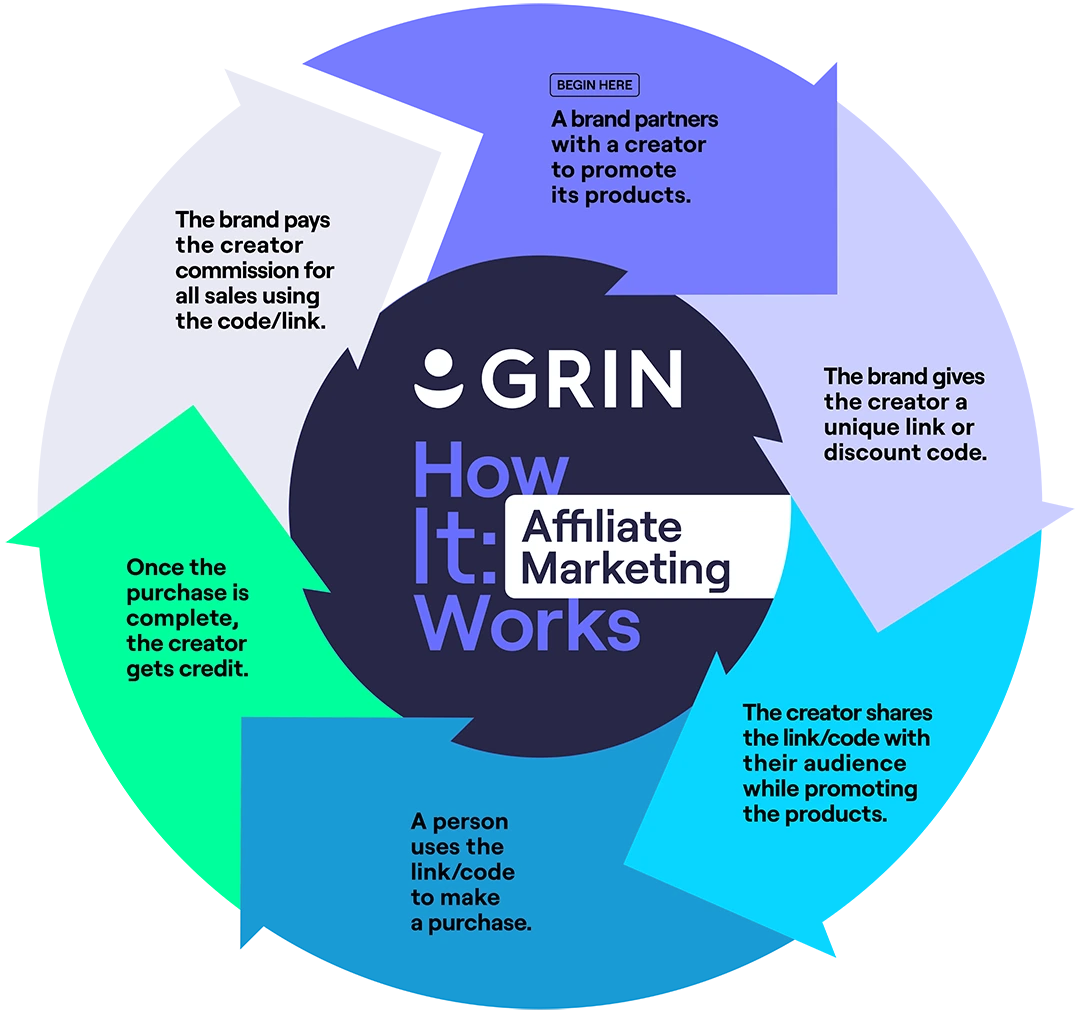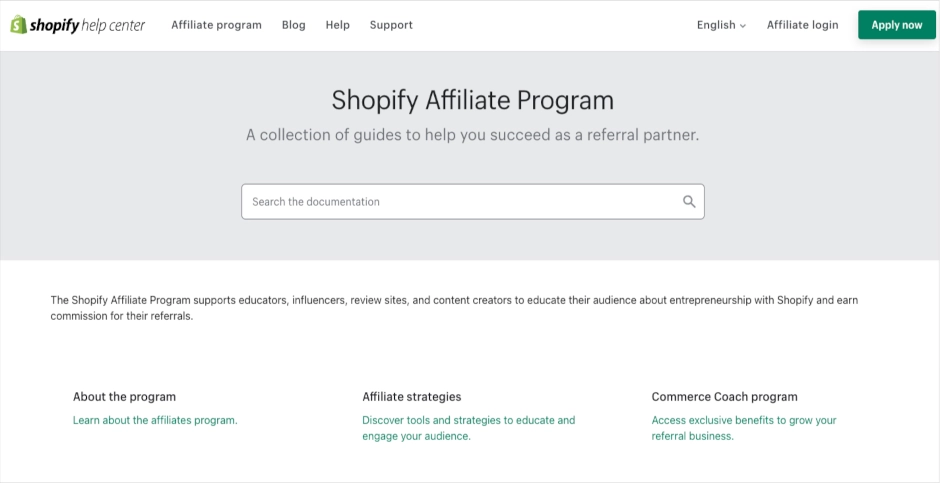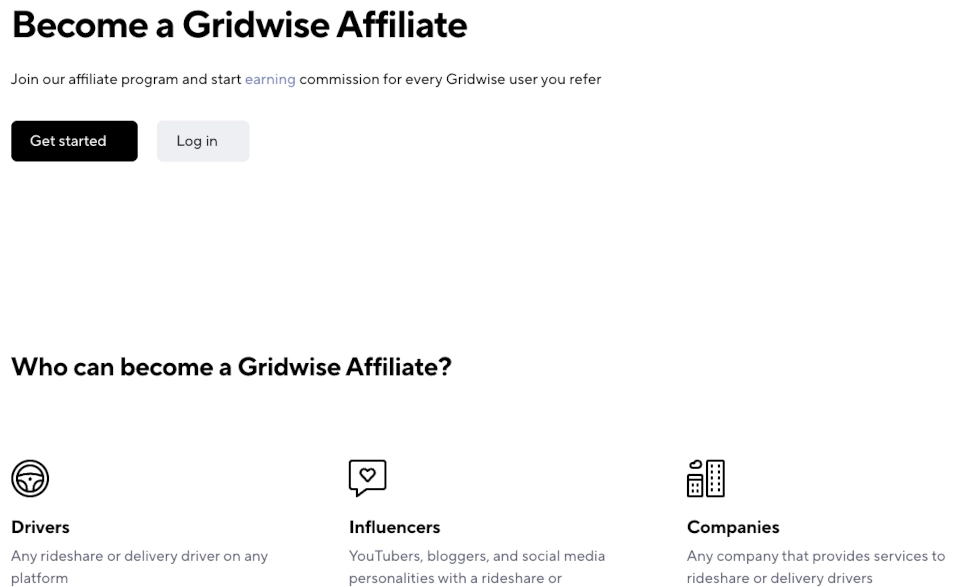Reading Time: 17 Minutes
One affiliate program can be very different from another in terms of approach and revenue potential. The most successful affiliate marketing programs offer generous commission rates, have clearly defined goals, and focus on nurturing long-term relationships with their affiliate partners.
Top affiliate marketers can bring in a slew of sales for ecommerce and SAAS companies, but the following common affiliate marketing mistakes can make it hard to recruit the most desirable affiliates.
Affiliate marketing programs offer the opportunity for a person or company to sell another company’s products and earn a commission on the sales they generate.
Affiliate marketing programs are built to help spread the word about your company to wider audiences. Affiliate marketing leverages the influence of online entrepreneurs, whose audience of buyers matches your target market, to both build your brand awareness and provide an avenue for more sales.

Affiliate marketing is traditionally an arrangement between content creators, like online bloggers or website owners, and a company. The affiliate promotes a product using a unique tracker, and if their visitor ends up buying the product, the affiliate’s name is tied to the sale and they earn a commission from it.
Successful affiliate marketers have built up an audience who expect that they will be sold to from time to time, but they have learned to trust the affiliate to steer them towards quality products that will benefit them.
Nowadays, most affiliate marketers work within a niche such as tech, professional development, or lifestyle products and they provide their audience with valuable knowledge, alongside their affiliate marketing promotions. The affiliate marketer is always clear about their role as a marketer, and are required to disclose their relationship as an affiliate to their audience.
Influencer marketing is leveraging the influence and trust an individual has over an audience to drive them to take a specific action. A brand will recruit a person with an influence, large or small, to share their brand story and product information with their audience on social media. Brands can also leverage influencers as social affiliates, by offering a commission on sales generated by an influencer discount code. But the added return on investment comes from the influencer’s ability to spread brand awareness, brand trust, and to generate unique, branded content that doesn’t feel like an ad.
While the affiliate marketer is most interested in generating demand for their affiliate products, an influencer is most interested in creating demand for their own content. And while some influencers are affiliates, not all affiliates are influencers.
Brands who want to set up an affiliate program must first define their goals for the program. Is it leads? Is it sales? Is it increased sales value? By how much?
Brands should also research their competition and become familiar with their affiliate marketing programs and what is working.
With these goals in mind, it’s important to designate someone to manage your affiliate program and make sure they understand how affiliate marketing is different from other marketing strategies and requires a unique approach. Then, along with your affiliate program team, decide how the program will be structured. Decide if you will use an affiliate marketplace or run your program in-house. Decide how much you will offer as commission and what software you’ll use to track affiliate sales. Also, determine your terms and conditions and rules for your program.
Once you’ve laid this groundwork, you can begin reaching out and working with affiliates who have audiences that match with your products and start recruiting.
This is one of the most critical affiliates marketing mistakes. When you don’t treat affiliates as partners, the approach becomes transactional and will limit the long term ROI of a program. Successful affiliate marketing is a long game, and it takes a lot of back and forth between the company and the affiliates. Over time, all that work begins to pay off in increased revenue. If you’re treating your affiliates simply as a cash machine, instead of a partner, you won’t ever see the full potential of a successful affiliate program.
Try recruiting your customers to be your affiliates and the partnership model will more easily follow. If the affiliate is not already a customer, make sure to set up an introduction call and send them samples to ensure they understand and appreciate your products and your brand. Pay attention to the data on your affiliates and figure out which of your products work best for their audience. Encourage your affiliates to develop multi-channel strategies, and provide them with the resources they need to successfully promote your products.
Most of all, make sure someone is communicating regularly with your top affiliate marketers to address any issues or concerns and ensure the continued mutual benefit from the program.
The goal of many affiliate marketers out there is to set something up to make money while they sleep. The beauty of affiliate marketing is that your company will also be earning money while the affiliate sleeps. The more you’re involved as a partner with the affiliate, the more successful they are going to be at selling your product, leading to a higher ROI from the program.
Convertkit is a full-featured email service provider used by many of the world’s most advanced email marketers.
The ConvertKit affiliate marketing program is geared primarily toward their existing users who feel that members of their audience can benefit from the service. Developing an affiliate relationship with existing customers is one of the best ways to ensure quality and longevity in your affiliate program.

If you don’t have clear goals for your affiliate program, the affiliates will end up defining your program for you. When you don’t know what you’re trying to get out of the program, it becomes difficult to define success. Some affiliates might get 100,000 impressions but generate zero sales. Another affiliate might only have 1000 impressions, but a third of those impressions get clicked, and half of those turn into sales. Depending on your goals for the program, you’re going to approach these numbers differently.
In addition, it can lead to trouble choosing the right affiliates, commission rates, and program terms.
Look at your affiliate marketing strategy as part of your whole marketing strategy. Have the affiliate management team in communication with the social team, and your promotions people, as well as the customer relations people and everyone in-between, and have them share ideas, campaign objectives as well as analytics. From there you’ll be able to define clear goals for your program that fit into your overall growth strategy.
Begin the relationship with affiliates with these clear objectives in mind. Use your stated goals and objectives to guide your choice of affiliates, how you structure your program, and ultimately, how you measure success.
Shopify is a commerce platform used by many online businesses to set up their ecommerce store. Shopify integrates with many different types of marketing channels and is one of the leaders in the ecommerce world.
The Shopify affiliate program offers comprehensive support including tools and guidelines for their affiliates to ensure their brand’s objectives are met across all platforms. When working with affiliates, Shopify can promote specific products and categories that meet Shopify’s own marketing goals.

In order to see revenue generated from your affiliate program, you have to be able to attract quality affiliates who are experts in your niche. When you try to skimp out on commission rates, you will turn off those exact affiliates who are good at what they do and know what they are worth.
If you don’t pay enough in commission, you will attract lower quality affiliates. However, when you reward your affiliates fairly, you will see a higher return because your affiliates will be motivated to sell.
Pay attention to your competitors and look into their affiliate marketing programs. Make sure that your program is attractive to your ideal affiliate marketers. Consider how much your company can make from your affiliate program with regard to customer retention rates and average customer lifetime value. Your commission rates need to be competitive, but ultimately they should reflect the financial value of the affiliate program.
Don’t be limited by percentage commission, you can get creative with offering rewards and bonuses that will make your program stand out and grab the attention of affiliates you want to work with.
Scentbird
Scentbird is a subscription fragrance company that allows subscribers to try out a monthly supply of their choice of designer and niche fragrances.
Affiliates of Scentbird have the opportunity to promote the things they love about the products and the service while earning a commission on the sales they generate. Scentbird offers a high enough commission rate to keep affiliates engaged and working their best to bring in sales.
If you don’t have clearly defined terms and conditions for your affiliate program, then you’re giving control of the program over to your affiliates. Without clear guidelines, they may not always behave with your company’s best interests in mind.
Define clear rules related to paid traffic, trademarked content, and the use of coupons before you roll out your program. Even once you’ve set up your terms, not all affiliates will follow them, so you need to have some sort of oversight in place to deal with those who violate your policies.
Vet your affiliates thoroughly and steer clear of those affiliates whose practices don’t jive with your company’s approach to affiliate marketing. Give new affiliates access to the terms and conditions of your affiliate program early on in your onboarding process and follow up with affiliates regularly to make sure they share the same objectives that you defined when you started.
Amazon is the top ecommerce marketplace in the world.
Over the course of their affiliate program, commission rates have fluctuated and rules have changed dramatically. But as one of the largest retailers in the world, their focus on strict terms and conditions in their affiliate program should prove just how important these are to success.

If you don’t have quality tracking software you will lose valuable data and threaten the viability of your program. Losses or mishaps in your tracking means you can’t pay your affiliates what they are due, and affiliates will leave your program.
Investing in higher quality tracking software gives you a number of advantages. You can catch sales inconsistencies and stop problems before they hurt your program’s reputation. You can get a more accurate picture of the value of customers coming through your affiliates, and steer your program accordingly.
If you choose the wrong platform, and you don’t have enough tracking abilities, you will end up with gaps in your data and have a more difficult time scaling up your program successfully.
Do your research and choose a dedicated affiliate tracking software that will accurately and reliably track your affiliates and avoid tracking interruptions. Choose a platform that integrates with both your affiliate’s needs as well as your own sales and order fulfillment software. Advanced tracking programs don’t rely just on cookies, which is fast becoming irrelevant as major tech companies move to block them. If you invest in a robust tracking software, you will be able to more accurately attribute sales.
Designate someone on your team to evaluate the tracking data and create a full picture of where the most valuable customers are coming from.
Gridwise is an app assistant used by ride-share and delivery drivers to track mileage, compare earnings across platforms, and gain quick access to a host of other relevant information.
Gridwise uses a comprehensive tracking system that integrates seamlessly with their own platform, offering affiliates easy access to the program and a wealth of data about the company’s own users.

When running an affiliate marketing program, brands need to be focused on long term growth and have in place the right people and tools to ensure they avoid these common mistakes.
When you take the time to properly set up your affiliate program and institute best practices in managing the program, affiliate marketing can generate quality leads and revenue for your company for years to come.
Our team keeps a finger on the pulse, so you’re always working with the latest information.